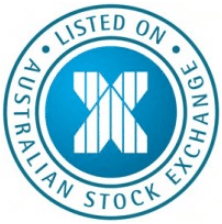
The connection between global equities and expected central bank action seems to have somewhat dislocated lately, and it’s good to see the markets use good news as their main input for sentiment, rather than second-guess central banks.
Global earnings have been good from all parts and this has been the key input, which of course should always be the case, as over the longer-term share prices should generally follow earnings and cash flows. Unfortunately over the years sentiment around monetary policy, mainly from the more proactive central banks (i.e. the Fed, PBOC and BoJ), has been the main top-down driver. When you have low growth and an abundance of excess liquidity, you will invariably see much of that liquidity make its way into the stock market.
For now the Federal Reserve seems sidelined and although likely to continue tapering its asset purchases by $10 billion a month, traders are not going to push the USD around with any conviction until they see the Fed funds rate and US two-year yields move higher. Right now both are anchored firmly and trading in a tight range.
This is why we are seeing AUD/USD testing key resistance at 0.9079, a EUR/USD that refuses to trade below 1.3700 despite comments from Mario Draghi that the ECB prepared to add stimulus on deflation risks, and a USD/JPY that won’t push convincingly above 102.50 despite a rise in developed equity markets.
The ECB won’t act anytime soon, and if you overlap a key basket of commodities against European inflation, you can see the commodities basket has been an excellent leading indicator here – the ECB look at headline inflation, rather than core inflation that subtracts volatile energy prices. This is something that could lead the ECB to leave rates on hold, despite many thinking they could cut. We’ve also seen Canadian inflation start a short-term trend higher, while rate expectations in Australia and New Zealand seem rich. So with the market giving the US a bye until less weather-affected data is produced in March, the two central banks with any real clout right now are the PBoC and BoJ.
In a way the BoJ are really sidelined until the April TANKAN report, when they get a sense of how corporate Japan see the trading environment post-consumption tax hike, hence why actions from the PBoC are front and centre right now.
Moves in USD/CNY at the heart of the markets
Aside from today, the PBoC have been weakening the CNY through its daily ‘fix’ operations, for five consecutive days, taking the pair on a sizeable rally. It’s unclear whether or not this has been in response to increased liquidity (with the seven-day repo highlighting this; dropping to the lowest level since July 2013), political issues in response to President Obama meeting the Dalai Lama, purely to create better two-way volatility to discourage hot-money inflows or just because of the its view on valuation. However there’s no doubt that the big moves in USD/CNY have been the key talking point on the floors lately and, along with news that ICBC was curbing lending to the property space, has been a key reason behind the sell-off in equities. This is due to a number of institutions issuing USD denominated debt hoping to take advantage of the longer-term downtrend in USD/CNY and pick up carry, and when this doesn’t materialise many of the positions around this (mostly in options) will lose money and subsequently put pressure on the equity market.
In saying that, today we have seen the USD/CNY fix lower by five pips, while the PBoC has drained RMB100 billion of liquidity through the use of reverses repos; although there has been little reaction yet in the money markets. Chinese stocks are seeing better days and after yesterday’s aggressive sell-off, are seeing more sanguine trade.
The fact that the Chinese market is flat has little bearing on other asset classes and we’ve actually seen modest selling in the AUD. This is because outside of the A50 cash, Hang Seng and H-shares the mainland indices (CSI 300 and the broader Shanghai Composite) have little correlations with any other asset class. The ASX 200, for example, actually has a 26% (or 0.26 as it’s quoted) 30-day correlation with the Shanghai Composite, while the trade-weighted AUD is around 16%. Therefore a simple sense check would suggest that the AUD is a good hedge against emerging market panic, driven predominately by China, but is a poor correlation hedge if you want to play sentiment towards the equity market. If you want to hedge-trade the Chinese market, simply play the A50 China market, which has a 94% 30-day correlation.
Failed break outs in the US and Australia
The failed break of the all-time high on the S&P 500 has been noted by a few traders and while it’s always positive to see a break out, it’s what it does after it breaks out which really counts, and a failure to close above 1850 could be fairly significant.
There has also been a failed break on the ASX 200, so after hitting high of 5461, good selling came into the market, pushing the index back below the October high of 5457, going on to close at 5433. Again a small but psychologically important win for the bears. European markets won’t be too enthused by price action in the US and Asia and look set to open on a slightly dour note. Looking at the economic data, it is fairly limited as well; with French business confidence, Italian retail sales, US house prices, Richmond Fed index and consumer confidence due out.
Chris Weston is Chief Market Strategist at IG Markets